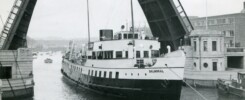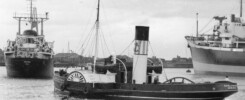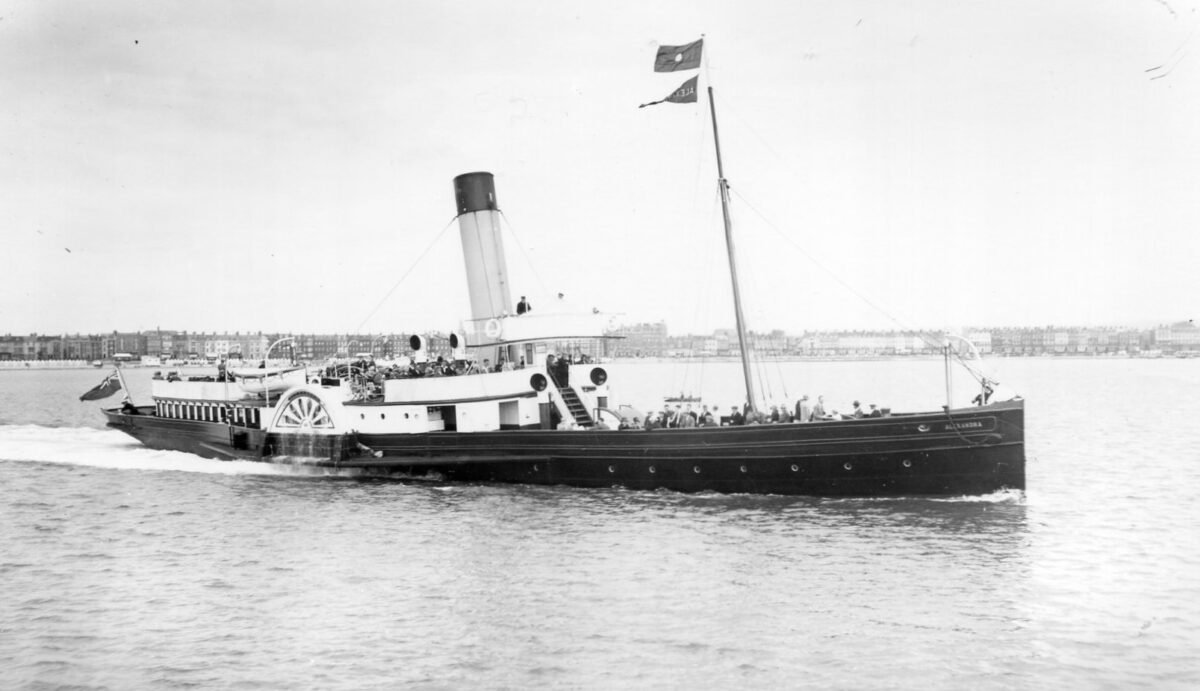
By Thursday 4th December 1930 Cosens’s Alexandra was on the sales list.
In November she had been hauled out of the water onto Cosens’s own slipway at Weymouth for survey. She had been built in 1879 for the Portsmouth and Ryde United Steam Packet Company so by 1930 was forty-one years old and by now the Board of Trade was making noises about her structural condition.
The survey did not go well. There was a need for extensive and expensive work to be done to her before the Board of Trade would consider renewing her Passenger Certificates. Cosens thought about this. They decided to cut their losses. And by Thursday 4th December 1930 she was up for sale.
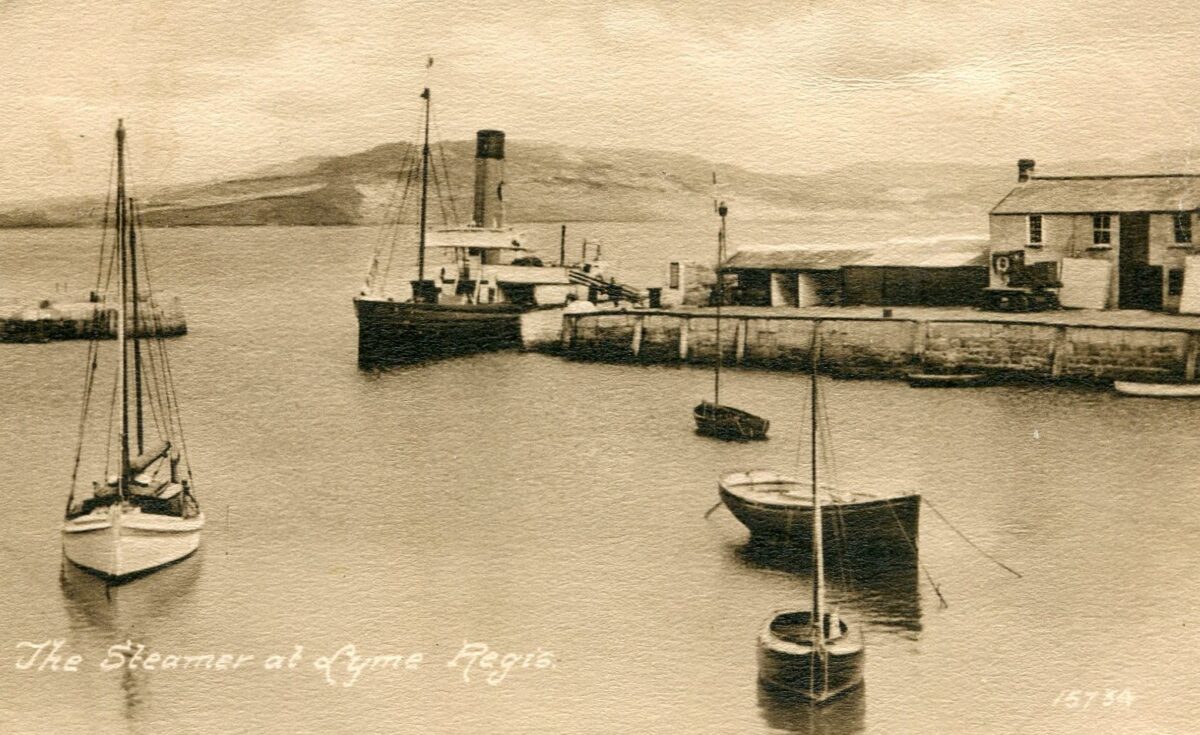
Alexandra had been bought by Cosens around the start of the First World War and was a useful acquisition to their fleet being sufficiently small to make her economical to sail over a long season and sufficiently versatile to operate on pretty much all their short and longer coastal routes from Weymouth, Swanage and Bournemouth including running up onto the Devon beaches and in Lulworth Cove to drop off and collect passengers over her bow. From 1924 to 1927 Cosens based her at Torquay to compete with the Duke and Duchess of Devonshire.
So now in December 1930 there was the question of whether or not to replace her. This must have been discussed as we know that P & A Campbell’s minute book for 24th December records that “Captain Peter Campbell reported that a representative from Cosens would inspect the Brighton Belle on Monday 29th December 1930. The purchase price being put forward being £10,000 (£659K in today’s money).”
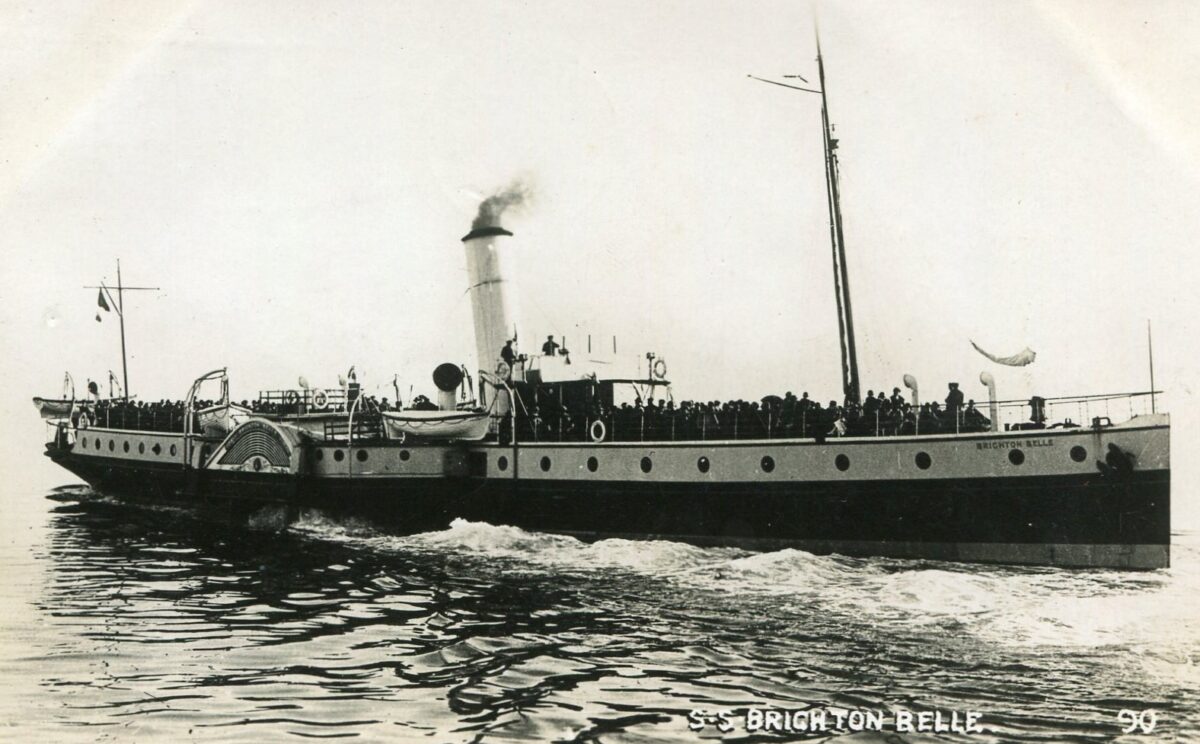
How this inspection went and what discussions ensued I don’t know. But I do know that in the end nothing came of it. Brighton Belle remained in the P & A Campbell fleet and Cosens did not replace Alexandra.
Alexandra was sold to Pollock Brown and Co of Southampton for scrap but unexpectedly they sold her on in February 1932 for further service on the Thames under the trading name of Showboat to a Captain A E G Hawkes and a Mr Clifford Whitley. The pair had plans to run her as an upmarket cabaret vessel from Westminster but they met with many initial difficulties both from the Board of Trade and the London County Council which licenced entertainment venues. In the end they overcame these issues and got her going for a short season with an onboard theatre offering smart song and dance routines on cruises featuring “famous stars” of the day including Miss Eve Becke and Mr Nelson Keyes. No, I haven’t heard of them either.
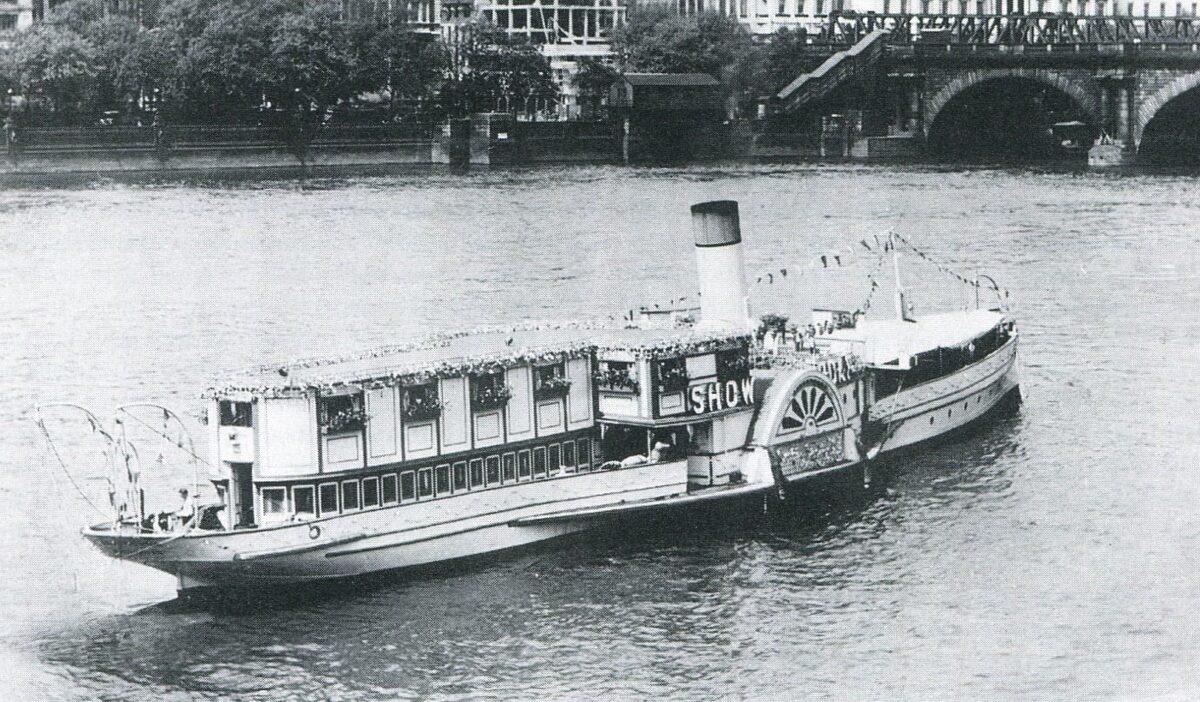
Intriguingly she was commanded by a Captain H F Defrates. I have always thought that this must be the same Captain H F Defrates who became a master with Cosens after the Second World War. After all it is such an unusual name that you wouldn’t think it very likely that there could be two Captain Defrates around at the same time with not only the same surname but also with the same initials. How wrong I was.
It turns out that the father of Cosens’s Captain H F Defrates’s was also a sea captain who also had the same initials H F. And the father had commanded the paddle steamer Plymouth Belle for a brief period during her incarnation running on the Sussex coast in the 1890s. Bizarre really. The older Captain H F Defrates was born in Mile End in 1867 and died in Croydon in 1951 aged 83 so would have been 65 in Showboat‘s time in 1932. Was he freshly retired from his career which had included a long spell with the Port of London Authority? And as a local with considerable local knowledge of the Thames and available did he help Showboat out that summer. Or was it his son who we know worked for the GSN during the 1930s? The younger Captain H F Defrates was born in 1895 and died in London in 1984 aged 89 so would have been 37 in 1932. There seems to have been quite a little enclave of people with the name Defrates living in the East End of London in the second half of the nineteenth century
The following year Alexandra tried her luck as a static entertainment venue anchored off Margate but that didn’t work out either Who wants a night out drinking and dancing on a ship rolling about across the tide and anchored out at sea? And how do you get the punters out there and safely ashore later when they were more than likely to be the worse for wear and a tad on the lively side with drink. By July the business had folded and she was towed to Shoreham where she became a houseboat until the autumn of 1934.
I have here with me an account of her departure from Shoreham written by the paddle steamer loving Mr R Mogg. He recorded: “The Show Boat Alexandra which has been stationed on the River Adur at Shoreham for the last year left for the Thames by the mid-day tide yesterday being consigned to a firm of ship breakers on the Thames at Grays in Essex.
Considerable public interest was manifest in her departure, her destination being Messrs Thomas Ward ship breakers of London. The London tug Venturous came for her, the harbour tug being at present in dry-dock. On Wednesday an attempt to get her through the footbridge proved futile, there being very little room to spare for a boat of her beam. Another attempt was made that day. Again, a large concourse of people witnessed the operation and this time she safely negotiated the bridge although scraping the south side of the bridge opening and damaging a gate. Apparently however on the face of it the damage to the structure is small. Passengers waiting to cross the bridge who had their gaze concentrated through the gate however jumped back quickly in alarm. The tug then proceeded on her way down the river, out of the harbour and up Channel without further incident.”
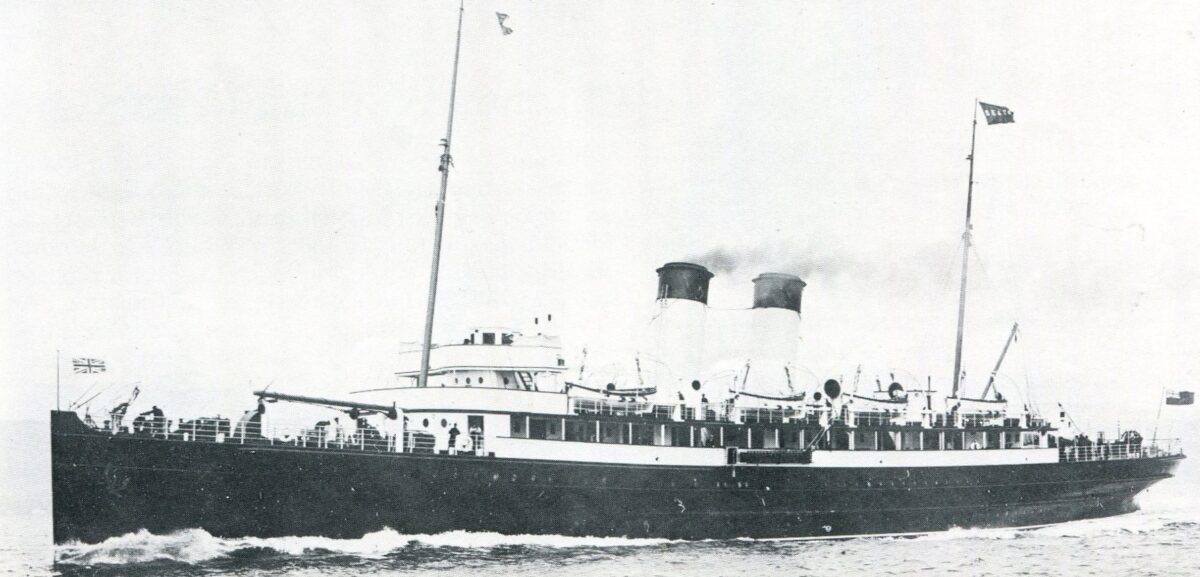
Alexandra was not the only start up trying her luck carrying passengers on the Thames in 1932. The turbine driven cross Channel ferry Engadine was also there on charter to Instone Lines to run a new service from London to view the Nore Lightship. She had been built for the South Eastern and Chatham Railway services from Dover and Folkestone in 1911 but by then was surplus to requirements. She had no more luck than Showboat and did not return in 1933. Sold for further service in the Philippines she sank in Manila Bay in 1941 after having hit a mine.
These are just two examples of a number of attempts by well-intentioned people with little or no previous experience of ship owning or ship operation to enter the domestic passenger vessel business during the last one hundred years using elderly tonnage in need of major refurbishment. Sadly many fell flat on their faces. There is a long history of it from the Thames to the Sussex Coast, to Bournemouth, to Weymouth, to Torquay to Liverpool, to Llandudno and so on and so forth around the country. Usually such attempts have lasted for about a couple or so seasons. By then the money had usually run out.
The four ingredients that all who seek to operate domestic passenger vessels need are these and it is not rocket science. You need a viable business plan which will produce a surplus of income over expenditure. You need the experience and expertise to deliver it. You need a vessel fit for its intended purpose. And you need the finance to get it started and underpin it. There may be other peripheral factors as well including a smidgeon of good luck to help you along the way but these are the four basic ingredients for any sort of success. Without any one of them a business will fail as night follows day. As did Showboat. As did Engadine. As did so many others over the years.
It must have come as a surprise for Cosens, who had their Alexandra up for sale on 4th December 1930, to find that the scrap dealer to whom they eventually sold her had moved her on to new owners for a new career. I don’t know how they viewed that but I do know that long-term Managing Director of P & A Campbell Clifton Smith-Cox once said of another similar start up domestic passenger vessel outfit several decades later “I wouldn’t put money on it!”
Kingswear Castle returned to service in 2023 after the first part of a major rebuild which is designed to set her up for the next 25 years running on the River Dart. The Paddle Steamer Kingswear Castle Trust is now fund raising for the second phase of the rebuild. You can read more about the rebuilds and how you can help if you can here.
John Megoran
This article was first published on 4th December 2020.

